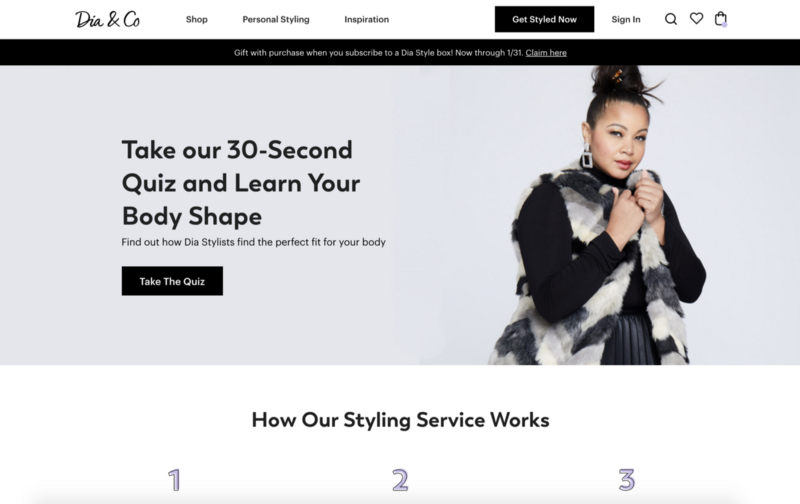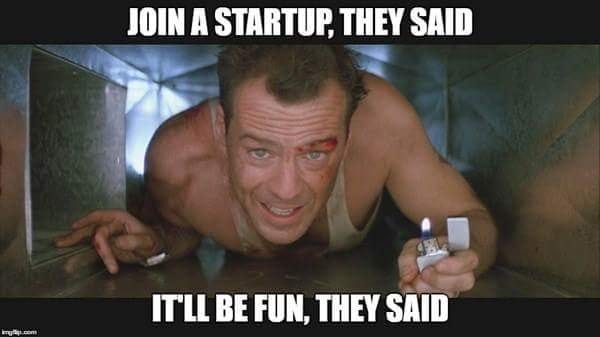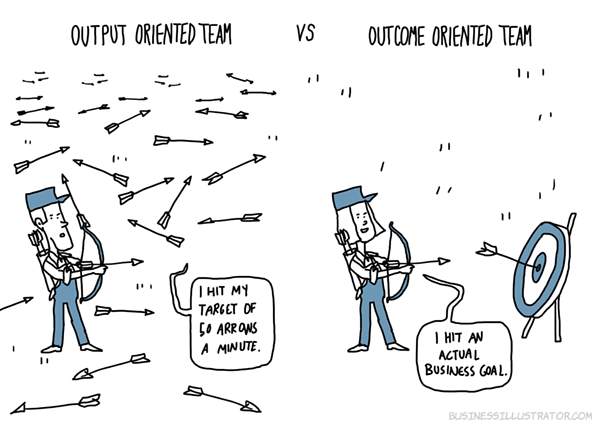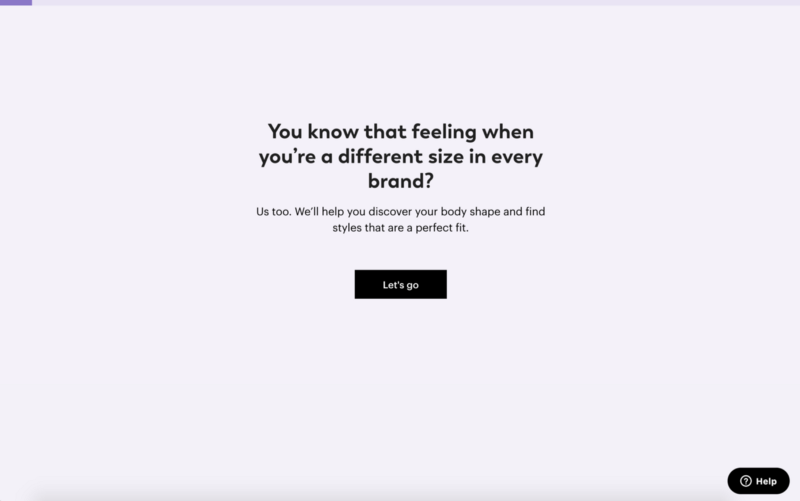A Conversion Conversation with MailChimp’s Natalie Lin
I worked with Natalie a few years ago at Autodesk where we tried to aggressively grow their Consumer business. Not all stories have a happy ending but one of the best things that came out of that experience was meeting her. She has one of the sharpest minds I’ve ever ran across?—?her vocabulary is staggering and she’s able to take on all sorts of problems with grace. I had the pleasure of catching-up with her recently to talk about how she leveraged experimentation at Dia&Co, as well as how she can’t think of any words that rhyme with “silver”.
Rommil: Hi Natalie! Happy holidays?—?how have you been? It’s been so long since we’ve chatted.
Natalie: It really has been too long since our time in the Consumer & 3D Printing group at Autodesk?—?I miss those days! After 6 years at Autodesk, I eventually made the leap back into the startup world. Soon, I’ll also embark on a big new life adventure, as my husband and I welcome a baby boy into the world this spring!
Congratulations! I hear that “Rommil” is a trendy middle-name LOL?—?but jokes aside, how about you share with us what you’re up to now and a bit about where you’re working today?
I’m a product leader with a passion for creating resonant user experiences that are powered by the integration of data and marketing technology.
Over the past year, I have led the Product Growth and Core Experience teams at Dia&Co, a D2C startup backed by Sequoia and Union Square Ventures. Dia serves plus-size women, an underserved population that represents nearly 70% of U.S. women! The product team at Dia and I have been focused on building, testing, and optimizing conversion funnels with an emphasis on acquiring into Dia’s subscription personal styling service, which features a detailed onboarding survey that lays the foundation for every user’s long-term relationship with her team of expert stylists.

At the end of this month, I’ll bid goodbye to Dia and join the Product team at MailChimp, which is doing exciting work to evolve its core email marketing service to better serve the needs of small-to-medium-sized businesses by delivering a comprehensive marketing automation platform.
Wow?—?congrats on the new gig! That’s awesome.
So, you’ve obviously worked as a product leader at Dia&Co and have worked with countless stakeholders, served an underserved segment, all while delivering results. What challenges did that pose? And how do you approach crafting product roadmaps to deliver outcomes?
As is typical of many growth companies, there’s more to do than you have time and resources to accomplish. One of the greatest challenge is in prioritizing the right work on behalf of the business while ensuring it’s always simultaneously addressing your target user’s needs. Mastering this balance is key to unlocking enormous market opportunity, and yet it’s also the toughest part of the job because you’ll often hear competing and conflicting messages about what’s top priority from executive stakeholders (whose louder and nearer voices can easily drown out those of your customer if you don’t remain focused).

I like to understand the strategic goals of the company and build a roadmap that is dedicated to delivering on requisite capabilities. This requires specific questions to be addressed. (What value are we as a company seeking to create in this quarter, this year, and/or over the next few years?—?and for which specific market segment? How will we measure success, or market-product fit?). It also requires staying in close communication with stakeholders to ensure transparency and support for development priorities.
Understanding the company’s target outcomes, and identifying the specific user for whom we are building, ultimately informs what our UX designers and engineers should work on (and in what sequence). Often that work requires foundational work, which is necessarily ordered first. For me and my teams, part of the roadmap is always dedicated to analytics. This is because, in order to keep a pulse on whether or not our users are successfully engaging in the experiences we roll out, our web and product experiences must be instrumented so that we can quantitatively analyze user delight and partner with our UX designers on the right qualitative research.

Good product managers aren’t CEOs of their products. Rather, a good PM is an effective advocate of the user and defender of the developer; s/he must be adept at collaborating with cross-functional stakeholders to ensure that the right work gets done well.
I couldn’t agree more. Nothing drives me more batty than a PM thinking they’re a mini-CEO. It simply isn’t true. I feel a PM’s job isn’t to make all the right decisions?—?but to ensure the best decisions are made. Sorry, rant over, ha!
Moving on. During your time at Dia, what were some of the key areas of product roadmap development you focused on in terms of experimentation and what challenges did you have to overcome?
Dia’s personal styling survey, which is required for every paid subscription customer to complete, had been a sacrosanct experience until I joined. I worked with the engineering, data, design, and marketing teams to radically reimagine the survey so that it now communicates a strong value proposition to our user, while also functioning as a data capture engine that powers Dia’s styling algorithms.

At first, we focused on discrete and small tests designed to reduce points of friction in the workflow, tweak our marketing copy, and improve the checkout experience. It soon became apparent that this initial series of tests wasn’t cutting through to the core problem: users abandoning our survey at the point of checkout. I fleshed out this hypothesis by working with our product designers on competitor and user research. Together, we determined that we would need to radically overhaul the survey in order to reflect a stronger message about who Dia is and why we are uniquely able to deliver on our customer’s personal style and fit preferences?—?without an experience that reinforced this value proposition, users would continue to feel unmotivated to signup for the styling service.
To change a high-visibility core experience requires substantial stakeholder buy-in, so I led the team in a roadshow that showcased our research and recommended design changes. We gained the needed support to move forward over the course of several weeks. As part of our experiment approach, we were careful to establish success metrics that would help us learn and objectively report on success across the organization. Ultimately, the revised survey experience we tested improved the subscription conversion rate by 44%; it is now the control survey experience.

You’ve done a ton of work in journey orchestration. Could you tell us about that and how you approach experimentation in an environment where one has to juggle so many factors?
To orchestrate a journey, one needs to have a customer journey mapped with conversion goals that denote movement from one journey stage to the next. This journey should also be reasonably well-instrumented so that bottlenecks and opportunities can be identified?—?then, linked to and measured against your company’s top-line reporting metrics so that you can determine prioritization effectively.
As a general rule: quantitative data will give you clues into what needs to be optimized first. Qualitative data will give you further insights into why the opportunities exist, and ideas on what to test in order to improve the user experience.
“This journey should also be reasonably well-instrumented so that bottlenecks and opportunities can be identified”
When you hire, are there any experimentation skill sets that you look for?
I like to work with people who exhibit an agile mindset?—?a value for rapid iteration, plus an openness to failing and quickly adjusting as part of the learning process. The agile mindset is just as (if not more) important to me than technical skills like understanding statistical research methods and familiarity with experimentation tools because it’s harder to cultivate that mindset than it is to build upon basic technical skills.
If you could go back in time, are there any experiments that you regret not running?
Absolutely! In most cases that come to mind, I delayed a test for too long while trying to make it too perfect or defensible. Instead, I should have run the experiment in iterative fashion to refine the concept faster and incrementally over time.
It’s time for the Lightning Round!
You might have the widest and most precise vocabulary I know of, outside of the dictionary. Can you tell me what rhymes with silver?
Orange? Purple? (Just kidding. I suspect this is a trick question! :))

Quick. No thinking. NYC or SF?
NYC! SF is a great place to start a career in tech, but there’s a lot of investment by Big Tech and VCs in NYC. It’s such a dynamic place with a deep talent pool, many strong industries, and great assets like public transportation. I love the density, diversity, and amazing cultural venues.
Again. No thinking. Product or Marketing?
Product. Build, deliver, AND message what the user really needs and wants.
Where do you start? Profitability or User-base growth?
Profitability. Growth at the expense of sound business economics is a pitfall that all companies should guard against, especially in the wake of SoftBank/WeWork. For example, too many D2C startups are over-indexed on high-cost acquisition channels that are leading to challenging economics; they should be learning from examples like WeWork and growing sustainably instead.
Acquisition or retention?
Retention. Acquisition is a vanity metric without the context of retention, LTV, margins. Real market-product fit must be measured beyond the signup/download/initial payment event.
Finally, it seems like you can do everything. Name ONE thing you cannot do? 😉
You are too kind! I’m still learning to accept this sad truth: I cannot do everything?—?or even just too much?—?at once!
Connect with Experimenters from around the world
We’ll highlight our latest members throughout our site, shout them out on LinkedIn, and for those who are interested, include them in an upcoming profile feature on our site.
- About our new Shorts series: CRO TMI - November 8, 2024
- Navigating App Optimization with Ekaterina (Shpadareva) Gamsriegler - October 18, 2024
- Building Your CRO Brand with Tracy Laranjo - October 11, 2024
